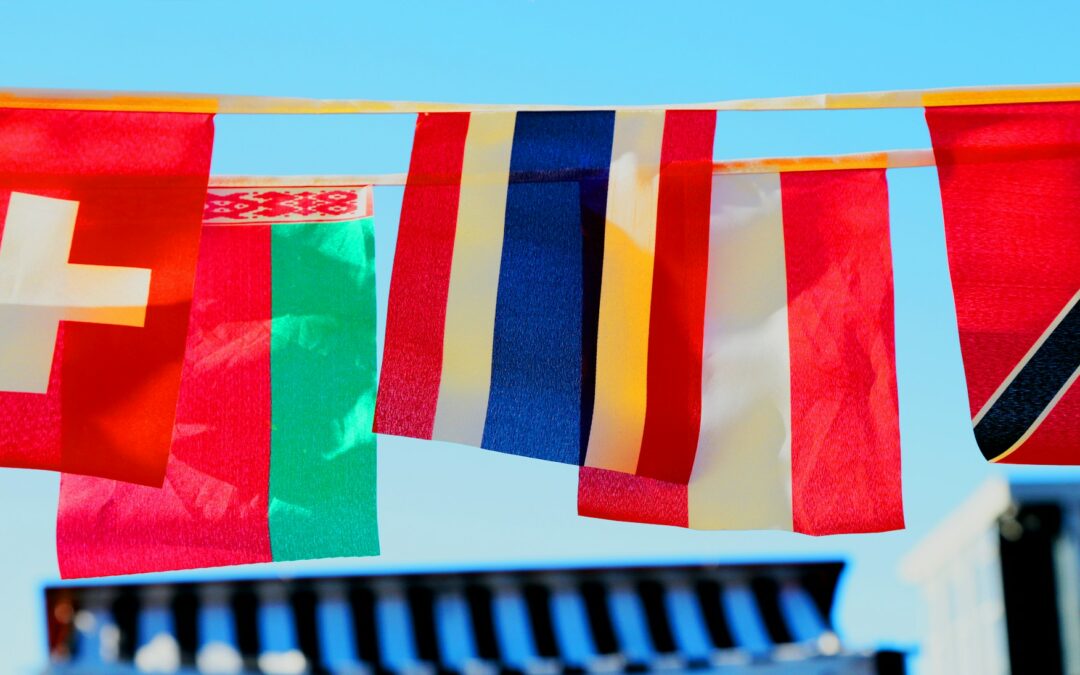Cultural stereotypes are oversimplified and generalized beliefs about the characteristics, attributes, and behaviors of members of a particular group. These stereotypes can be about nationalities, ethnicities, genders, or any other groups, and often emerge from a blend of historical interactions, media portrayals, and limited personal experiences. While they can sometimes contain a grain of truth, stereotypes typically fail to capture the full complexity and diversity of the individuals within these groups, leading to misconceptions and, in many cases, prejudice.
Understanding and challenging cultural stereotypes is crucial for fostering a more inclusive and empathetic world. This article aims to explore 20 examples of cultural stereotypes, breaking down their origins and the reality behind them. By doing so, we hope to shed light on the importance of seeing beyond these simplistic views and appreciating the rich, multifaceted nature of human cultures. Through this exploration, we invite readers to reflect on their own perceptions and consider the impact that stereotypes have on both personal and societal levels.
What is a Cultural Stereotype?
A cultural stereotype refers to a widely held but fixed and oversimplified image or idea of a particular type of person or thing, common within a culture or across different cultures. These stereotypes often stem from a combination of historical events, media portrayals, and limited interactions with members of the group in question, leading to generalized beliefs about the behaviors, characteristics, and roles of that group. Cultural stereotypes can be about any aspect of culture, including nationality, ethnicity, gender, profession, or social class. While sometimes based on a kernel of truth, stereotypes typically ignore the diversity and complexity of individuals, and can contribute to prejudice and discrimination when negatively applied.
It’s important to highlight that these perceptions are not only oversimplified but often perpetuated through various channels such as films, literature, social media, and even educational materials. This reinforcement across different platforms solidifies these stereotypes in the collective consciousness, making them more challenging to dismantle.
Furthermore, cultural stereotypes can have significant societal implications. When positive, they may lead to unrealistic expectations and pressures on individuals to conform to certain norms. On the negative side, they contribute to marginalization, social exclusion, and can significantly impact an individual’s opportunities in life, including employment, legal justice, and interpersonal relationships.
It’s also critical to understand the role of confirmation bias in the perpetuation of cultural stereotypes. Individuals tend to seek, interpret, and remember information that confirms their pre-existing beliefs, which in turn reinforces stereotypical thinking. Breaking down these stereotypes requires conscious effort, education, and exposure to diverse perspectives and experiences to appreciate the richness and variety within any cultural or social group.
20 Most Common Cultural Stereotypes Examples
1. The “Efficient German” Stereotype: This stereotype paints Germans as highly efficient, punctual, and disciplined. While Germany is known for its strong work ethic and precision engineering, it’s essential to remember that personality traits vary widely among individuals, regardless of nationality. This stereotype overlooks the diversity within German society and the range of personalities it encompasses.
2. The “Polite Canadian” Stereotype: Canadians are often stereotyped as exceptionally polite and apologetic. While Canadian culture does place a significant emphasis on politeness and civility in public interactions, it’s important not to reduce an entire population to a single characteristic. Canadians, like any other group, display a broad spectrum of behaviors and attitudes.
3. The “Passionate Italian” Stereotype: Italians are frequently depicted as passionate, expressive, and lovers of food and family. While Italian culture is indeed rich in history, cuisine, and family values, attributing these characteristics universally ignores the personal experiences and temperaments of individual Italians, simplifying a rich and varied culture.
4. The “Hardworking Asian” Stereotype: This stereotype suggests that Asians are inherently hardworking, excelling in academics and professional fields, especially in STEM (science, technology, engineering, mathematics). While many Asian communities value education and diligence, this stereotype can create unrealistic expectations and pressures, and fails to acknowledge the wide range of interests, abilities, and aspirations among Asian individuals.
5. The “Loud American” Stereotype: Americans often face the stereotype of being loud, outgoing, and somewhat brash. While the United States is known for its culture of openness and freedom of expression, it’s a vast country with a diverse population that cannot be accurately represented by a single behavioral trait. This stereotype does not account for the varied social etiquettes and personalities found across different regions of the U.S.
6. The “Lazy South European” Stereotype: This stereotype categorizes Southern Europeans, including those from countries like Spain, Italy, and Greece, as lazy and less productive, often attributed to siesta cultures or a laid-back lifestyle. However, this overlooks the economic, climatic, and cultural nuances that influence lifestyle choices, as well as the hard work and productivity in these societies.
7. The “British Reserve” Stereotype: The British are often seen as reserved, stoic, and with a stiff upper lip. While British culture may historically promote restraint in emotional expression compared to some other cultures, it’s reductive to assume all British people conform to this demeanor. The UK’s rich cultural diversity means there is a wide range of personalities and behaviors.
8. The “French Snob” Stereotype: This stereotype suggests that the French are snobbish, especially regarding their language and cuisine. While pride in one’s culture is not inherently negative, the French population, like any other, consists of individuals with a broad array of attitudes toward other cultures and preferences.
9. The “Fiery Latin American” Stereotype: Latin Americans often get stereotyped as fiery, passionate, and expressive, with a love for dance and music. While Latin American cultures are indeed vibrant and expressive, attributing a single temperament to the diverse peoples of an entire continent overlooks the rich variety of individual experiences, personalities, and cultural expressions.
10. The “Spiritual Indian” Stereotype: This stereotype portrays Indians as inherently spiritual, philosophical, and connected to ancient practices like yoga and meditation. While spirituality is an important aspect of Indian culture for many, India is a diverse country with a wide array of religious, philosophical, and cultural beliefs and practices. Reducing this diversity to a single stereotype fails to appreciate the complexity of its people and their individual beliefs.
11. The “Technologically Inept Elder” Stereotype: This stereotype suggests that older adults are universally challenged by technology and unable to adapt to new advancements. While generational differences in technology use exist, many seniors are quite adept at using modern technology. This stereotype dismisses the adaptability and learning capabilities of older generations.
12. The “African Poverty” Stereotype: Often, Africa is portrayed as a continent overwhelmed by poverty, conflict, and underdevelopment. While certain regions face economic challenges, Africa is a continent with a wide range of economies, cultures, and levels of technological and infrastructural development. This stereotype overlooks the wealth of innovation, cultural richness, and diversity across African countries.
13. The “Rich Arab” Stereotype: This perception frames individuals from the Middle East, particularly those from Gulf countries, as uniformly wealthy, often associated with oil riches. It ignores the socio-economic diversity within these countries, including the presence of poverty, and overlooks the cultural and historical richness of the Middle Eastern societies beyond their economic status.
14. The “Eastern European Mafia” Stereotype: Eastern Europeans are sometimes unfairly stereotyped as being involved in organized crime or as being overly harsh and cold. This stereotype not only stigmatizes people from this region but also fails to recognize the rich cultural traditions, resilience, and warmth that characterize these societies.
15. The “Irish Drinker” Stereotype: The stereotype that Irish people have an inherent propensity for drinking and joviality simplifies a deep and nuanced culture. While pubs and social drinking are part of Irish social life, Ireland, like any country, has a diverse population with a wide range of lifestyles and beliefs about alcohol.
16. The “Submissive Asian Woman” Stereotype: This stereotype paints Asian women as docile, submissive, and obedient. It is not only a gross oversimplification but also a harmful one, ignoring the strength, independence, and leadership roles that Asian women hold in various sectors of society, including politics, business, and the arts.
17. The “Lazy African American” Stereotype: This deeply problematic stereotype falsely characterizes African Americans as lazy and reliant on welfare. It fails to acknowledge the systemic barriers and discrimination that impact opportunities for African Americans, as well as the significant contributions and hard work of African American individuals across all sectors of society.
18. The “Latin Lover” Stereotype: This stereotype portrays Latin men as exceptionally romantic, passionate, and attractive, often with a hint of being a womanizer. It reduces men from Latin American backgrounds to a single, monolithic character, ignoring the vast diversity of personalities, values, and relationships within these communities.
19. The “Native American as Nature-Lover” Stereotype: Indigenous peoples in North America are often romanticized as having a special, mystical connection to nature and being inherently environmentalist. While many Indigenous cultures have a strong tradition of respecting and living in harmony with the earth, this stereotype can oversimplify and homogenize diverse cultures and beliefs.
20. The “Swedish Minimalist” Stereotype: Swedes are frequently stereotyped as minimalist in everything from design to lifestyle, embodying a sophisticated, functional aesthetic. While Sweden is renowned for its contributions to design and a societal emphasis on simplicity and functionality, this stereotype overlooks the personal tastes and lifestyle choices of individual Swedes, which can range widely.
Negative Impact of Cultural Stereotypes on The Society
Cultural stereotypes can have several negative impacts on society, contributing to discrimination, bias, and a lack of understanding. Here are some of the detrimental effects.
Perpetuates Prejudice and Discrimination – Cultural stereotypes often reinforce negative prejudices, leading to discriminatory attitudes and behaviors. When people believe in and act upon stereotypes, it can result in unjust treatment and marginalization of individuals from certain cultural groups.
Undermines Individuality – Stereotypes oversimplify and homogenize diverse groups of people, disregarding individual differences and unique qualities. This undermines the recognition of individuals as unique human beings with their own experiences, talents, and characteristics.
Limits Opportunities – Cultural stereotypes can limit opportunities for individuals within certain cultural groups. For example, if a particular group is stereotypically associated with certain professions, individuals from that group may face barriers in pursuing careers outside of those stereotypes.
Impacts on Mental Health – Being subject to cultural stereotypes can have a negative impact on the mental health of individuals. Constant exposure to stereotypes and discriminatory behavior can lead to stress, anxiety, and a sense of alienation.
Creates Social Division – Stereotypes contribute to the creation of social divisions by fostering an “us versus them” mentality. This division can lead to tension, conflict, and a lack of social cohesion within a diverse society.
Inhibits Cross-Cultural Understanding – Cultural stereotypes hinder genuine cross-cultural understanding. Instead of fostering appreciation for diversity, stereotypes perpetuate misconceptions and prevent meaningful interactions and dialogue between people from different backgrounds.
Reinforces Power Imbalances – Stereotypes often emerge in the context of power imbalances, where one group is perceived as superior and another as inferior. This reinforces existing inequalities and makes it difficult to achieve social justice and equality.
Affects Educational Attainment – Stereotypes can influence educational expectations and opportunities. For instance, if a certain cultural group is stereotyped as less intelligent, individuals from that group may face lowered expectations in academic settings, affecting their educational attainment.
Hampers Career Advancement – Cultural stereotypes can impact career advancement by influencing hiring decisions, promotions, and opportunities. Individuals from stereotyped groups may face bias in the workplace, hindering their professional growth.
Contributes to Segregation – Stereotypes can contribute to social segregation as people may self-segregate or be excluded from certain social circles based on cultural stereotypes. This segregation further limits opportunities for meaningful intercultural interactions.
Fosters Microaggressions – Cultural stereotypes can manifest in everyday interactions as microaggressions—subtle, often unintentional, discriminatory comments or behaviors. These microaggressions can create a hostile environment and perpetuate stereotypes.
Deters Diversity and Inclusion Efforts – Cultural stereotypes can hinder efforts to promote diversity and inclusion in various settings, including workplaces and educational institutions. Stereotypes may lead to resistance or reluctance to embrace diversity initiatives.
Addressing the negative impact of cultural stereotypes requires a collective effort to challenge and dismantle these stereotypes, promote cultural understanding, and create environments that celebrate diversity and inclusivity. Education, awareness, and fostering open dialogue are key components of combating the harmful effects of cultural stereotypes in society.
Types of Stereotypes
In the tapestry of human interaction, stereotypes serve as both a simplifying tool and a complex barrier. These are widely held but fixed and oversimplified images or ideas of a particular type of person or thing. While stereotypes can stem from a kernel of truth, they often grow to become distorted echoes of reality, echoing through the corridors of our social consciousness.
One prevalent type of stereotype is based on nationality, where individuals are ascribed traits based on their country of origin. For instance, the Brits are often tagged as tea-loving and overly polite, while Americans might be viewed as loud and entrepreneurial. These national stereotypes, while sometimes humorous, can lead to prejudgments that overlook the rich individuality and diversity within each population.
Another common category centers around profession. Lawyers are frequently stereotyped as cunning, doctors as noble, and artists as eccentric. These occupational stereotypes can influence our expectations and interactions, sometimes hindering people’s ability to see the person beyond the profession.
Age-based stereotypes are yet another category that profoundly affects societal dynamics. Young people might be dismissed as inexperienced and tech-obsessed, while older individuals could be seen as out of touch or resistant to change. Such stereotypes not only oversimplify complex individuals but also contribute to ageism, impacting everything from employment opportunities to interpersonal relationships.
Stereotypes also manifest in the realm of education and intellect, where individuals are often boxed into being ‘nerdy’ or ‘street-smart.’ These distinctions, while they might carry a grain of truth regarding different types of intelligence, can limit individuals by confining them to narrow identity corridors, overshadowing the multifaceted nature of human capability.
The fabric of stereotypes is woven with threads of simplification, but it’s crucial to recognize the pattern of misunderstanding they often create. While they can sometimes serve as a cognitive shortcut for processing the world around us, stereotypes more frequently act as blinders to the rich spectrum of human individuality. It’s through recognizing and challenging these oversimplified views that society can move towards a more nuanced and comprehensive understanding of each other, fostering an environment where every individual is seen for their unique contributions and not just the shadow cast by societal labels.
How to Avoid Cultural Stereotypes?
Avoiding cultural stereotypes is essential for fostering understanding, respect, and inclusivity. Here are some ways to steer clear of cultural stereotypes.
- Educate Yourself – Learn about different cultures through reputable sources, books, documentaries, and conversations with individuals from those cultures. Understanding the nuances and diversity within a culture helps dispel stereotypes.
- Question Assumptions – Be mindful of your own assumptions and question them. Challenge preconceived notions you may have about certain cultures and recognize that individuals within a cultural group can have diverse experiences and perspectives.
- Individualize People – Treat people as individuals rather than representatives of their cultural group. Understand that personal characteristics, behaviors, and preferences vary widely, and not everyone conforms to cultural stereotypes.
- Avoid Generalizations – Refrain from making sweeping generalizations about a particular culture. Recognize that cultural traits are broad generalizations and don’t accurately represent every individual within that group.
- Be Open-Minded – Approach new experiences and interactions with an open mind. Embrace the opportunity to learn about and appreciate different cultures without relying on preconceived ideas.
- Ask Questions and Listen Actively – If you are curious about someone’s background, ask open-ended questions and actively listen to their responses. This can help you understand their unique experiences and perspectives.
- Travel and Exposure – Traveling to different places and exposing yourself to diverse cultures firsthand can broaden your understanding and challenge stereotypes. If travel isn’t possible, engage with diverse communities in your local area.
- Cultural Sensitivity Training – Consider participating in cultural sensitivity or diversity training programs. These programs can provide valuable insights into recognizing and avoiding stereotypes.
- Avoid Jokes and Stereotypical Language – Refrain from making jokes or using language that perpetuates stereotypes. Humor that relies on cultural stereotypes can contribute to misunderstandings and reinforce biases.
- Acknowledge Cultural Differences Respectfully – Recognize and respect cultural differences without assigning value judgments. Understand that what may be considered normal in one culture might be different in another, without being better or worse.
- Check Your Biases – Be aware of your own biases and work towards overcoming them. Implicit biases can influence our perceptions and actions, so it’s essential to actively address and challenge them.
- Encourage Diversity in Media – Support and consume media that portrays cultures accurately and without reinforcing stereotypes. Encourage diverse representation in movies, TV shows, and other forms of media.
By actively challenging stereotypes and embracing cultural diversity, we contribute to a more inclusive and understanding world. It requires continuous self-reflection and a commitment to learning from and appreciating the richness of different cultures.
Read also: 30 The Best Courage Examples
The Most Popular on BitGlint

Gene-Editing Babies: 20 Pros and Cons to Consider
The topic of gene-editing babies is one that stirs a lot of discussion and debate. It's about scientists using...

Top 30 Individual Autonomy Examples & Why It Matters
Individual autonomy, the capacity to make one's own decisions and govern oneself, stands as a cornerstone of personal...

Top 20 Cultural Hybridization Examples & Definition
Cultural hybridization is a fascinating phenomenon where different cultures blend to create something entirely new and...

Top 20 Moral Subjectivism Examples & Definition
Moral subjectivism asserts that ethical judgments and moral values are based on individual preferences and...

Top 20 Dualism Examples & Definition
Dualism, a concept deeply rooted in philosophy, theology, and psychology, refers to the existence of two distinct,...

Top 30 Symbolic Archetypes Examples & Their Meaning
Symbolic archetypes are the building blocks of storytelling, weaving deep significance and universal themes into...

Top 20 Pluralism Examples & Definition
Pluralism represents the fabric of a society woven with varied threads – different beliefs, cultures, and...
Get Inspired with BitGlint
The Most Popular on BitGlint

Gene-Editing Babies: 20 Pros and Cons to Consider
The topic of gene-editing babies is one that stirs a lot of discussion and debate. It's about scientists using...

Top 30 Individual Autonomy Examples & Why It Matters
Individual autonomy, the capacity to make one's own decisions and govern oneself, stands as a cornerstone of personal...

Top 20 Cultural Hybridization Examples & Definition
Cultural hybridization is a fascinating phenomenon where different cultures blend to create something entirely new and...

Top 20 Moral Subjectivism Examples & Definition
Moral subjectivism asserts that ethical judgments and moral values are based on individual preferences and...

Top 20 Dualism Examples & Definition
Dualism, a concept deeply rooted in philosophy, theology, and psychology, refers to the existence of two distinct,...

Top 30 Symbolic Archetypes Examples & Their Meaning
Symbolic archetypes are the building blocks of storytelling, weaving deep significance and universal themes into...

Top 20 Pluralism Examples & Definition
Pluralism represents the fabric of a society woven with varied threads – different beliefs, cultures, and...
Get Inspired with BitGlint

